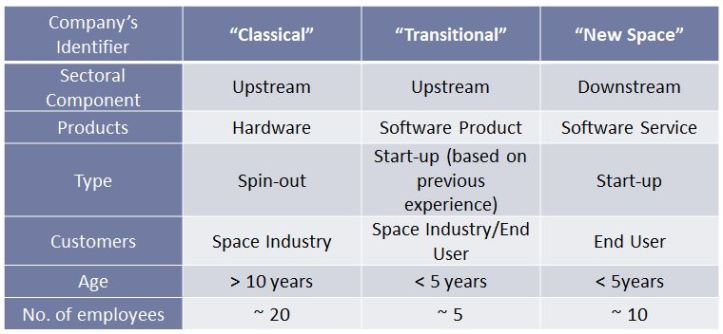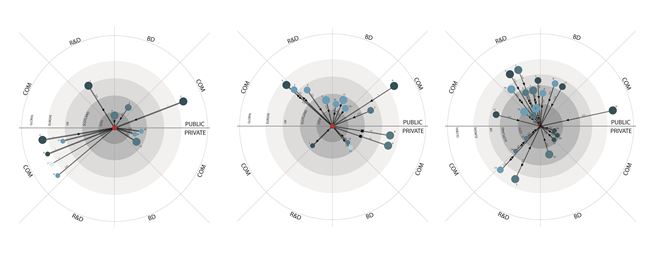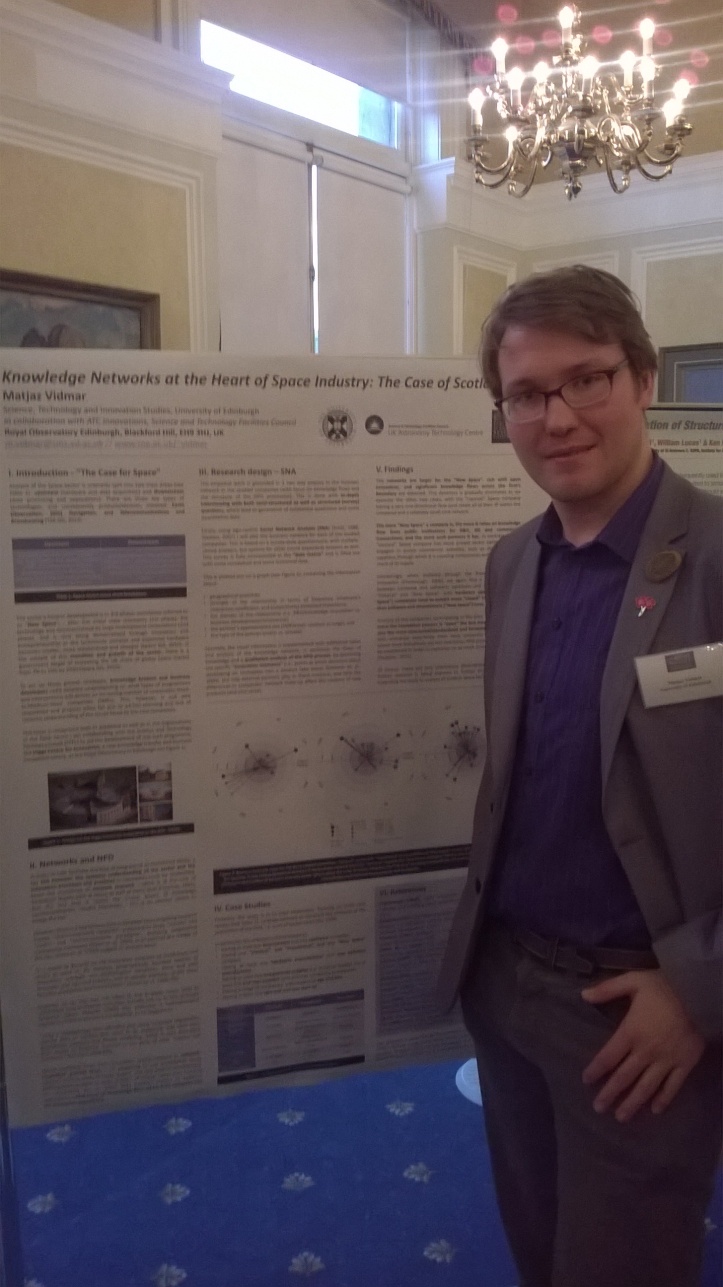This is a belatedly late post about some of my (early) research findings – and my efforts to disseminate them.
This is build around Phase 1 of my research into the facilitation of technology transfer from basic research into high-tech industry, which is (hopefully) leading to overall economic growth and prosperity.
I am focusing on the Space Sector, the historic development of which is in its 3rd phase, sometimes referred to as the “New Space”, – after the initial state monopoly (1st phase) and the technology being commercialised by large multinational corporations (2nd phase), it is now being democratised through innovation and entrepreneurship as the (previously complex and expensive hardware becomes smaller, more standardised and cheaper (Space IGS, 2010). In the context of this transition and growth of the sector, there is a government target of increasing the UK share of global Space market from 7% to 10% by 2030 (Space IGS, 2010).
For small and medium size enterprises (SMEs) – which are the subject of my research – this is also denoting a transition in SMEs from “technology-push” to “market-pull” new product development (NPD) orientation, based on a shift from “supplying” to larger companies to “selling” to end customers/users, which is also moving from “mass-manufacturing” to developing Complex Products and Services (CoPS) (Hobday, 1998) and vertical value chain integration.
In order to help facilitate technology transfer at this transition point – one of the objective of my research – a key link between the systemic understanding of the sector and the innovation processes and practices in companies must be established. Given the prevalence of network research – which is at the core of Innovation studies both at macro as well as micro level (Freeman, 1991), due the fact that it covers the crucial aspect of knowledge commercialisation, namely interaction – this is an obvious choice to bridge the two.
In particular I am using ego-centric Social Network Analysis (SNA) (Scott, 1988; Giuliani, 2007) to plot the business network for each of the three studied companies (see table above). This is based on a survey-style questionnaire, with multiple-choice answers, but options for other (more expanded) answers as well. This enabled me a comprehensive analysis of the knowledge network, in particular the flows of knowledge and a qualitative analysis of the NPD process, by examining the specific “innovation moments” (i.e. points at which decisions about developing an innovation into a product take place) (Edwards et. al., 2000), the role external partners play in those instances and how the differences in companies’ network make-up affect the creation of new products (and vice-versa).
Presently, the study is in its pilot incarnation, focusing on three case studies, carefully selected to represent key elements of the population of the field (upstream /downstream; hardware/software; start-up/spin-off; “Classical”/”New Space”; products/services), i.e. a set of typical cases (Yin, 2009), as summarised here:

In short, these are the key findings so far:
- The networks are larger for the “New Space”, rich with open innovation, and significant knowledge flows across the firm’s boundary are detected (see the network plots below). This dynamics is gradually diminishes as we examine the other two cases, with the “classical” Space company having a very one-directional flow (and retain all of their IP within the company) and a relatively small core network.
- The more “New Space” a company is, the more it relies on knowledge flow from public institutions for R&D, BD and commercial transactions, and the more such partners it has. In contrast a more “classical” Space company has more private sector partners, mainly engaged in purely commercial activities, such as distributors and suppliers, through which it is sourcing components and maximising the reach of its supply.
- Interestingly, when analysed through the framework of Open Innovation (Chesbrough, 2006), we again find a very clear divide between hardware and software; upstream and downstream; and “classical” and “New Space”, with hardware upstream (“classical Space”) companies tend to exhibit more “closed” innovation models than software and downstream (“New Space”) ones.
- Analysis of the companies participating in the pilot suggests that the more the innovation process is “open” the less hierarchical it is, but also the more structured/standardised and formalised. This is in line with anecdotal experience from most successful high-tech areas, where more formalised, yet less restrictive, NPD protocols are being to be established in order to capitalise on as much innovation as possible (Neapole, -2015).

Of course, these are only preliminary observations and substantial further research is being planned to further this work, including expanding the study to analyse all Scottish Space Sector companies.
If you are interested in a more full account of my research click through for the full paper presented at Reinventing Space 2015 conference (Oxford, 9th-13th November 2015)
Here is also a photo of my poster (from SUPA Cormack Meeting 2015):

